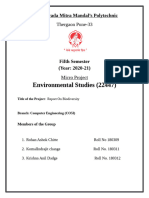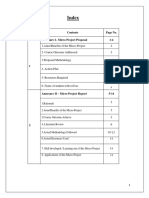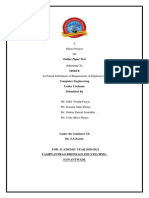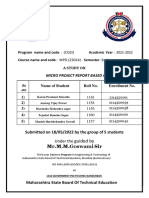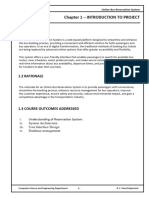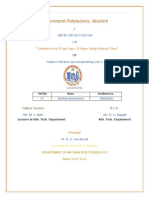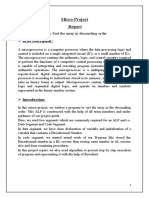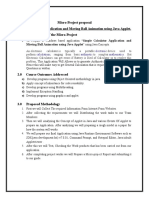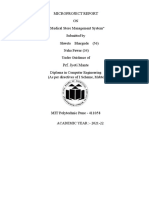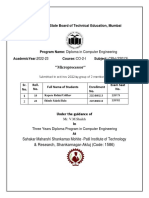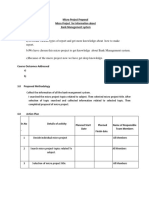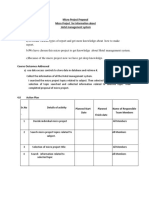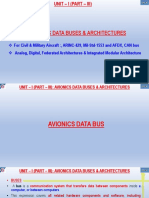0% found this document useful (0 votes)
593 views30 pagesMIC Microproject
This document discusses various pins in microprocessors. It aims to provide knowledge about the different pins in a microprocessor. The methodology involves collecting information about all the pins in a microprocessor. An action plan is then proposed which includes deciding on individual micro projects, searching for related topics, selecting a micro project title, and collecting information on the selected topic. The document proposes to analyze the functional blocks and instruction sets of microprocessors to gain a deeper understanding of various pins.
Uploaded by
ᴠɪɢʜɴᴇꜱʜ ɴᴀʀᴀᴡᴀᴅᴇ.Copyright
© © All Rights Reserved
We take content rights seriously. If you suspect this is your content, claim it here.
Available Formats
Download as PDF, TXT or read online on Scribd
0% found this document useful (0 votes)
593 views30 pagesMIC Microproject
This document discusses various pins in microprocessors. It aims to provide knowledge about the different pins in a microprocessor. The methodology involves collecting information about all the pins in a microprocessor. An action plan is then proposed which includes deciding on individual micro projects, searching for related topics, selecting a micro project title, and collecting information on the selected topic. The document proposes to analyze the functional blocks and instruction sets of microprocessors to gain a deeper understanding of various pins.
Uploaded by
ᴠɪɢʜɴᴇꜱʜ ɴᴀʀᴀᴡᴀᴅᴇ.Copyright
© © All Rights Reserved
We take content rights seriously. If you suspect this is your content, claim it here.
Available Formats
Download as PDF, TXT or read online on Scribd
/ 30


